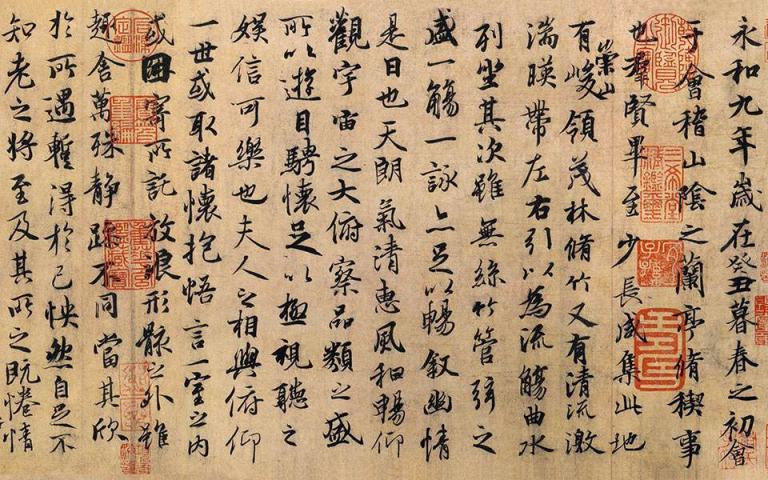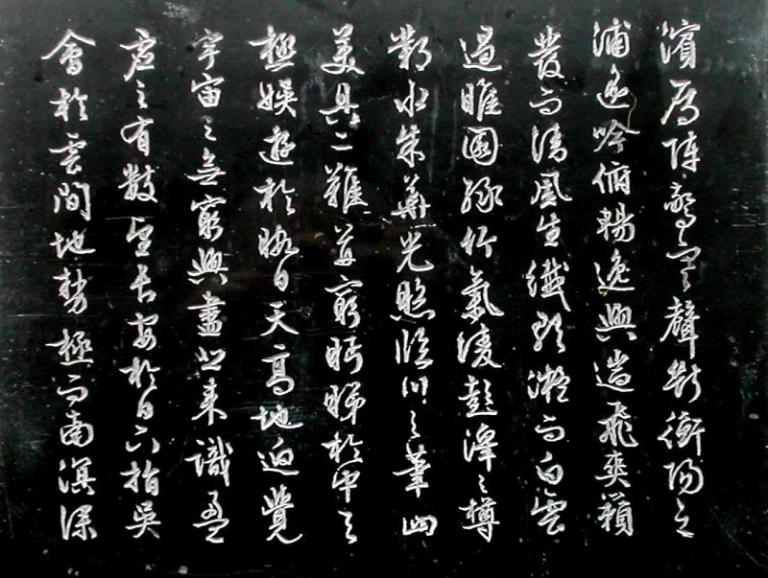Cai Yong and Han Clerical Script
4 min readThe Han dynasty, which had lasted for 426 years from 206 B. C. to A. D. 220, was in the prime of the development of clerical script in the history of Chinese calligraphy. Clerical script has a very long history It was put into use in the Qin dynasty; finalized its style in the Western Han and became mature and achieved its culmination in the Eastern Han dynasty. The whole process was called by the literati “transformation of clerical script”.

It is an epoch-making evolution in the history of Chinese char cacters. As clerical script became popular and made great achievement in the Han dynasty it gained the name “Han clerical script”. Han clerical script, which had simple structure and abundant stipple configuration and no pictographic characteris, was quite different from seal script. Since then, the art of Chinese calligraphy was able to express the thought and affection of the calligrapher through diversified movement of lines and spatial conformation of structure.
It finally parted the primitive stage when painting and calligraphy had little difference and became a highly abstract art of lines.And Chinese calligraphy, as a distinct art form, had become mature. As an art of calligraphy, Han clerical script experienced two periods. One is the Western Han period. In the beginning of the Western Han, clerical script was still in its juvenility and greatly influenced by seal script of the Qin dynasty. The structure was not square and regular; the strokes were with no obvious waves and rising endings. These can be observed in the recent unearthed inscriptions on silk and wooden or bamboo slips of the Han dynasty. Mature clerical script could be seen in the mid-Han dynasty and there were two representatives: one was the script on the bamboo slips unearthed in Ding county Hebei province.

On the bamboo slips were 8 classic literatures written in the perio of Emperor Xuandi of the Western Han dynasty. The script was clear and steady, flexible yet with strength. The other representative was script unearthed in Weiwu, Gansu province in 1959. The script was excerption of Confucian classics produced by a brilliant calligrapher in the period of Emperor Chengdi of the Western Han dynasty. The other period is the Eastern Han dynasty. The late Eastern Han dynasty was the golden age for clerical script. On one hand, the use of brush provided people with freedom and expressive force in writing. On the other hand, patriciate liked to be praised as people with respectable merit and behavior. So it was very popular to erect stele and engrave epitaph to praise him after his death. And the stele inscription encouraged the decorating characteristic of Chinese characters.
Both the form and strokes of clerical script were mature and had formed a standard script acknowledged officially. Han clerical script was natural and graceful and its representati was the large amount of stele inscriptions, which were considered as models by calligraphers of later ages. They were inscribed in eight different styles: the first is vigorous and upright; the second is neat and refined the third is elegant and graceful; the forth is primitive and simple; the fifth is grand and wide; the sixth is imposing and dignified; the seventh is peculiar and carefree; and the eighth is gentle and Veridical. Besides, there were some stone steles with classics onside in the Xiping period (172-178) of the Han Emperor Lingdi’s reign. The steles were named Stone Classics of Xiping Reign. It is believed that they were produced by Cai Yong.
Cai Yong (133-192), also named Bojie, was from Chenliuyu, Qi county in Henan province. He was really learned and versatile. He liked mathematics,. uranology and was good at painting and playing musical instruments. He was especially adept at writing seal script and clerical script. His clerical script was very famous. It was commented that “Cai Yong’s script is vigorous and with mysterious expressive Ca power. Cai Yong created a new technique of calligraphy: “flying white” style of writing. The script had strokes with a little bit blank area It seemed that they were written with writing brush lack of ink. He used writing brush in a quick and elegant way and gave us the impression of being carefree and energetic.
Cai Yong was not only a great calligrapl, but also a theorist of calligraphy of the Eastern Han dynasty. He played a very important role in the history of calligraphy theory.
He also said that calligraphy should follow the vividness and beauty of substances in nature and should emphasize visualized beauty, etc. These notable thought and concept were of great guiding significance and laid the theoretical foundation for the development of Chinese calligraphy. In 175, the fourth year of Xiping period under the Han Emperor Lingdi’s reign, Cai Yong and others made effort in revising the six Confucian classics. He thought that in those classics there were too many strained interpretations and many words were wrongly used. So he presented a memorial to the emperor to revise these classics so that they wouldn’t mislead the later students.
Having got the approval from the emperor, he inscribed in person all the six classics in clerical script on steles and erected them in front of the imperial school. There were all together steles named Stone Classics of Xiping Reign, which had great influence on later classic study and collation. In terms of calligraphy, all characters in Stone Classics of Xiping Reign were written with plump and elegant strokes, precise and regular structure. And they were considered as the standard of mature clerical script at that time and were canonized widely thereafter.









